Explore all New Cars of 2024
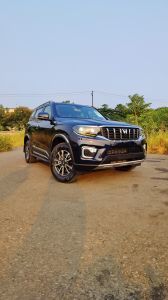 Mahindra Scorpio N Z8 Select (Z8 S) Explained in 10 Images
Mahindra Scorpio N Z8 Select (Z8 S) Explained in 10 Images

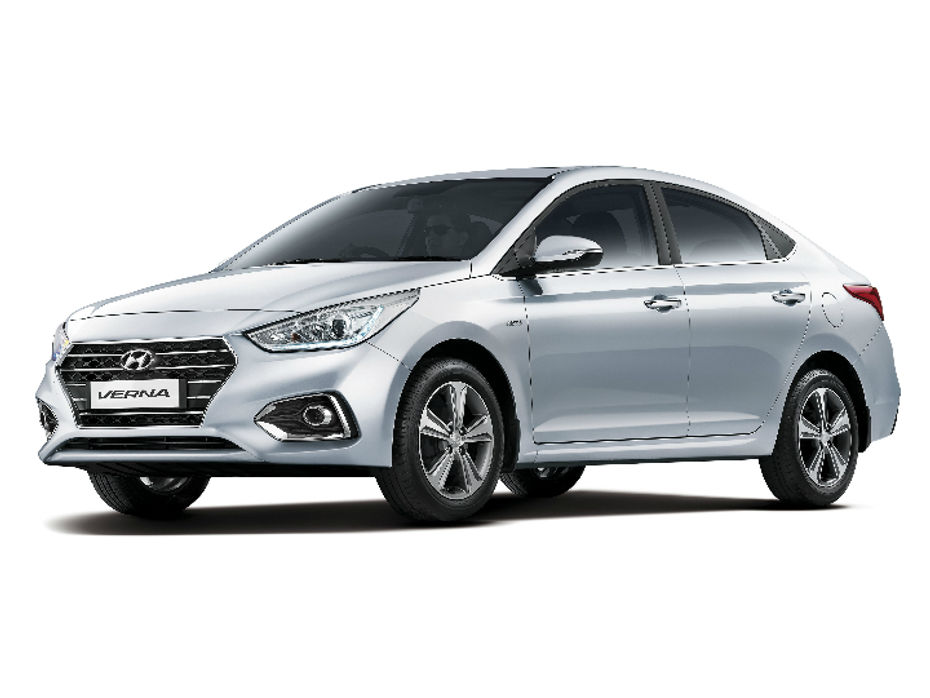
Baby Elantra?
It's quite possible these words quickly spring to mind once you lay eyes on the new C-segment offering from Hyundai. The toned-down Fluidic 2.0 design language looks chic, classy and thankfully, not overdone. Visually, you can't really tell if the Hyundai Verna has grown in size. We'll wait for official figures from Hyundai India, but a quick glance at spec-sheets of the sedan's Chinese cousin show an increase in length, width and wheelbase.
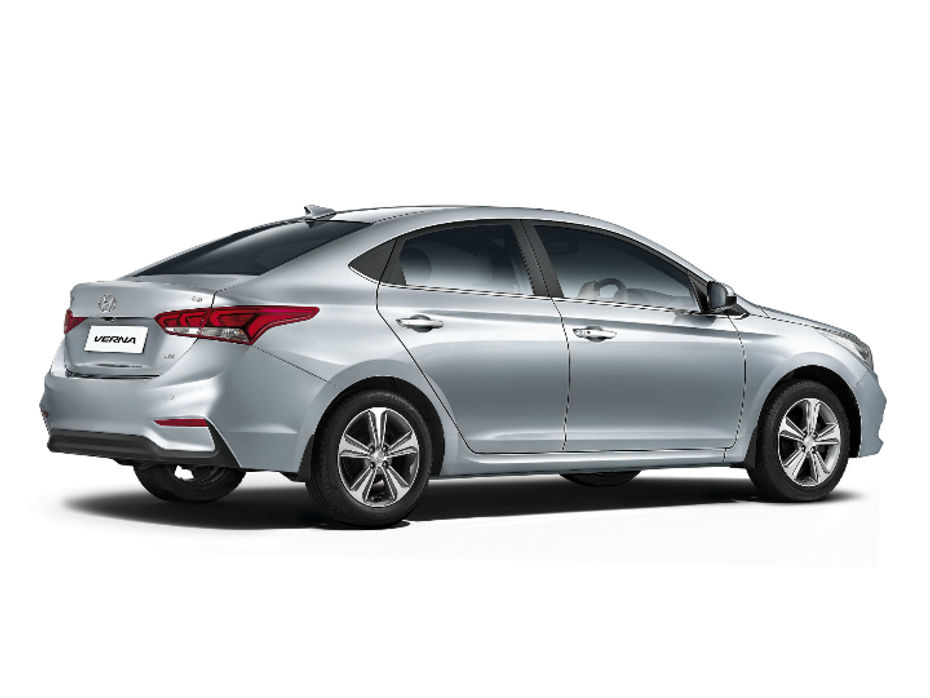
Hyundai's shared a few pics with us, so thankfully, this report isn't just a blob of text. As you can see, the new Verna is a lot more mature in its appeal. The clefts and creases are subdued, but the design continues to scream 'Hyundai'. The top-spec variants we sampled featured projector headlamps with daytime running lamps as well as projector foglamps. The new family grille takes centre stage, and there's some hexagonal detailing that adds contrast to the chrome outline. There's some more of it around the foglamp enclosure, and a neat chrome underline along the window line as well.
That brings us to the side, which isn't as dramatic as the outgoing version. The 16-inch 'diamond cut' alloys fill the wheel wells nicely and it has a nice confident stance too. Round to the rear, the LED tail lamps look like the grown up versions of those on the Xcent. Hyundai's also cleverly shed flab at the rear by incorporating a black diffuser at the base of the bumper.
Still posh?
Yep. There's no denying the fact that the Verna continues to be a solidly-built car. The choice of materials look and feel premium, but there's no zing to talk about. Yes, the layout is user-friendly and convenient, but there's no novelty here.
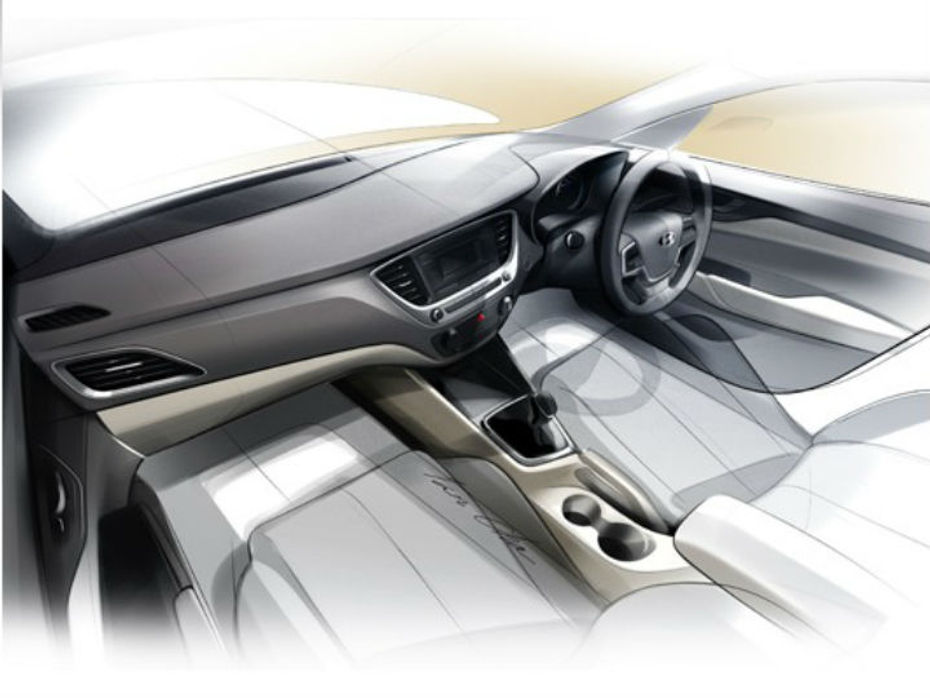
The garish wood trim has made way for a clean black-silver theme which is easier on the eyes. The steering is similar to what we've seen on the Elantra, and the dials look modern too. In case you're wondering, yes - the Verna's MID is comprehensive and features a Distance To Empty readout unlike the Creta. The centre console is a three-layer stack that houses a 7-inch touchscreen system (with Android Auto, Apple CarPlay and Navigation) right at the top. The usual climate control interface sits right under. Hyundai says the Verna's AC has 'Eco Coating' tech that rids the cabin air of any odour. That's a step ahead from their 'Clean Air' technology.
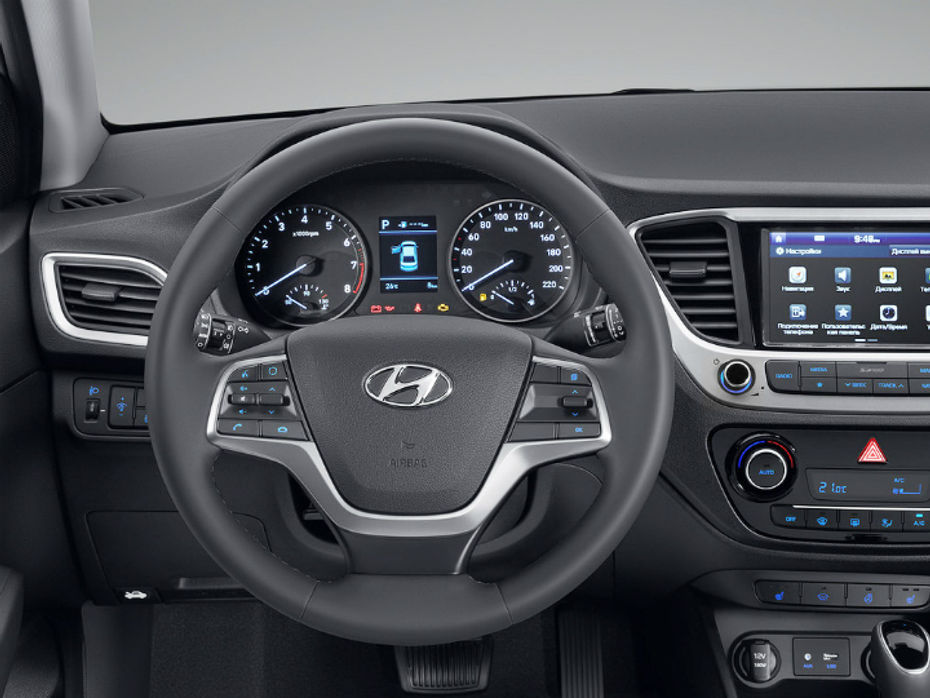
(Global-spec Verna Interior pictured for reference)
Here's where things get really interesting. The Verna gets what's among our favourite in-cabin features - ventilated seats! It's the only car in its segment to get it; the next being its elder sibling - the Hyundai Elantra. More hand-me-downs from the bigger Hyundai sedan comes in the form of an electric sunroof, and hands-free boot release that pops open the trunk if you wave your foot underneath the rear bumper.
The Verna continues to feature leather upholstery, and the front seats score high in terms of cushioning and comfort. The rear is a compromise in comparison - the legroom isn't generous and anyone over six feet will be a bit too close to the roof. Seating three, although possible, will be a squeeze. That said, rear occupants are treated to their own air-conditioning vents, a central armrest and a single USB socket to juice up the phone.
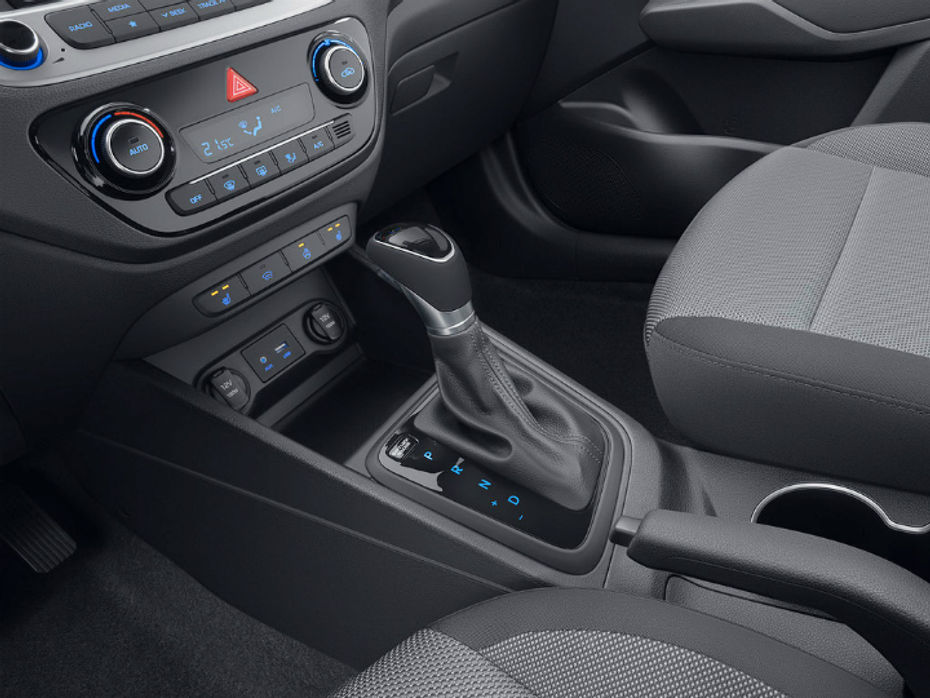
As far as safety is concerned, the top-spec variant we drove around, featured six airbags. We're expecting dual airbags and ABS to be standard across the range, as is the case with the refreshed Honda City.
Get Going
Hyundai's Verna will be offered with two engines, not four. The 1.4-litre engines have been shelved altogether. The 1.6-litre petrol and diesel engines have been carried over, but not without tweaks. Though power figures are identical at 123PS (petrol) and 128PS (diesel), Hyundai says that the torque is a lot more accessible. For instance, at 1250rpm you'd have 245Nm of torque on tap, compared to 176Nm in the outgoing Verna 4S diesel. Similar case with the petrol, where it makes a full 7Nm more at 1500rpm compared to the outgoing car that developed 122Nm. There’s a 6-speed manual like before, but, the 4-speed automatic transmission has been ditched in favour of a 6-speed automatic, presumably borrowed from the Creta.
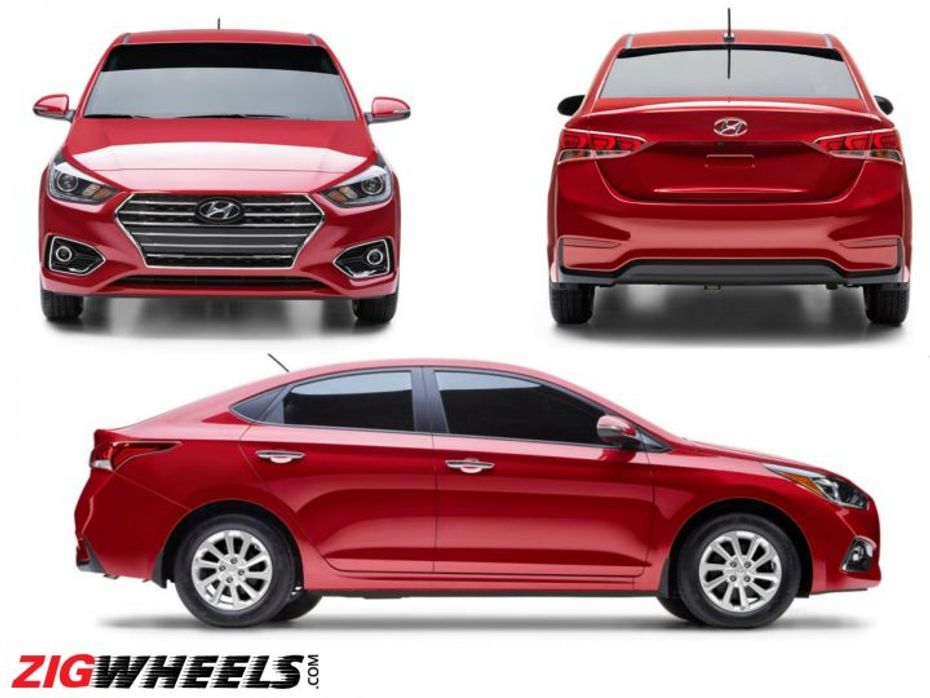
(Global-spec Verna pictured for refernce)
We could only sample the diesel avatar of the Verna, but had a go with both the transmissions. Clutch in, thumb the start-stop button, and the engine comes to life with a faint clatter. The engine feels smooth and refined as you start driving. The highlight here is the drivability of the motor, courtesy the torque. You can lug it at 30kmph in third. Step on it, and expect it to build speed cleanly. Much like the little Xcent, power delivery remains linear, save for a small spike in power at around 1700rpm. The diesel should make for a good city car as the clutch is light (albeit springy), and the gearshifts are quick n’ slick.
If you don’t want that hassle altogether, the new automatic gearbox will save the day. It shifts through the gears quickly and just gets the job done. Don’t expect it to be a sporty gearbox that will give you split-second shifts. Think of it rather as convenience and it seems just right for the job. There’s a manual mode too, but it didn’t seem all that engaging to use. It’s best left to its own, really.
What’s appreciable, is the fact that the Verna is no longer a skittish handler. Around the skidpad, it remained composed as we chucked it about. Yes, there’s a bit of body roll but it’s predictable. And, we’d say the same thing about the steering as well. It is light, sure - but not dead. It does a good job of telling you what the front wheels are up to. Impressive! We can’t comment on the ride just as yet, but Hyundai tells us the new suspension has been engineered to be more forgiving, more pliant and quieter. It should have no qualms munching highway miles, but we’ll reserve our word on it till we get enough time with the car.
Wrap it up!
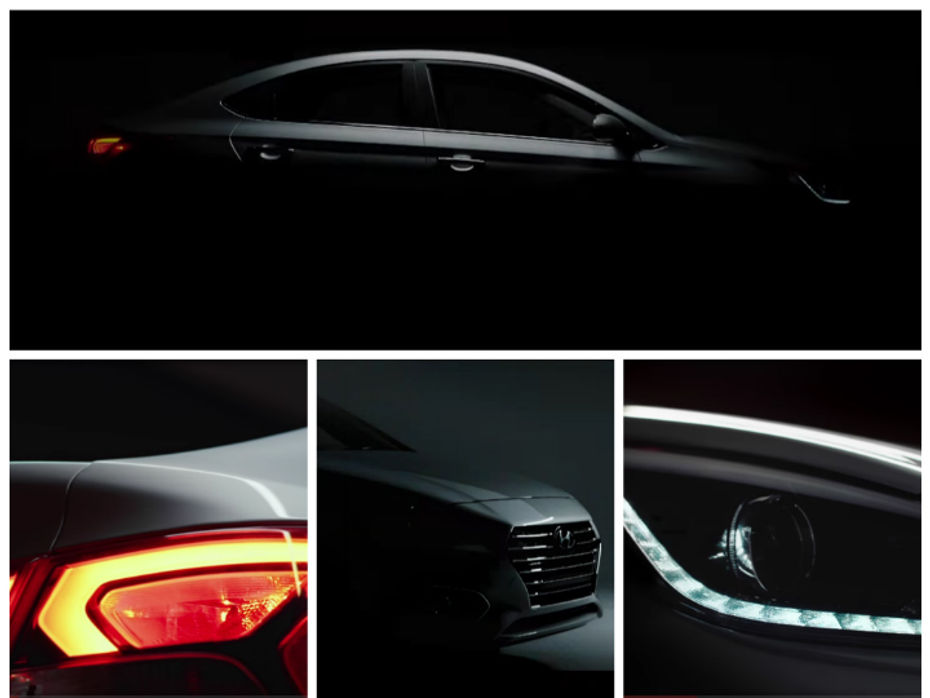
To put it simply, the Verna’s package has only become stronger. The new design is mature and likeable, and like most Hyundais - it is loaded to the gills as well. Our short spin has us impressed with the drivability of the diesel, and the dynamics when you hustle it. Yes, the interior could’ve looked a lot less simpler and some more room at the back would’ve made it the perfect package. But, that doesn’t take away from the fact that Verna will catapult right to the top of the consideration list for the self-driven lot. It isn’t going to be easy, but Hyundai does look well-prepped to slug it out with the updated Honda City and the to-be updated Maruti Ciaz.
Recommended Read: 2017 Honda City: First Drive Review
Update: Hyundai has launched the new Verna in India. Petrol variants are priced from Rs 7.99 lakh to Rs 12.24 lakh. Diesel variants are priced from Rs 9.19 lakh to Rs 12.40 lakh.
India's largest automotive community